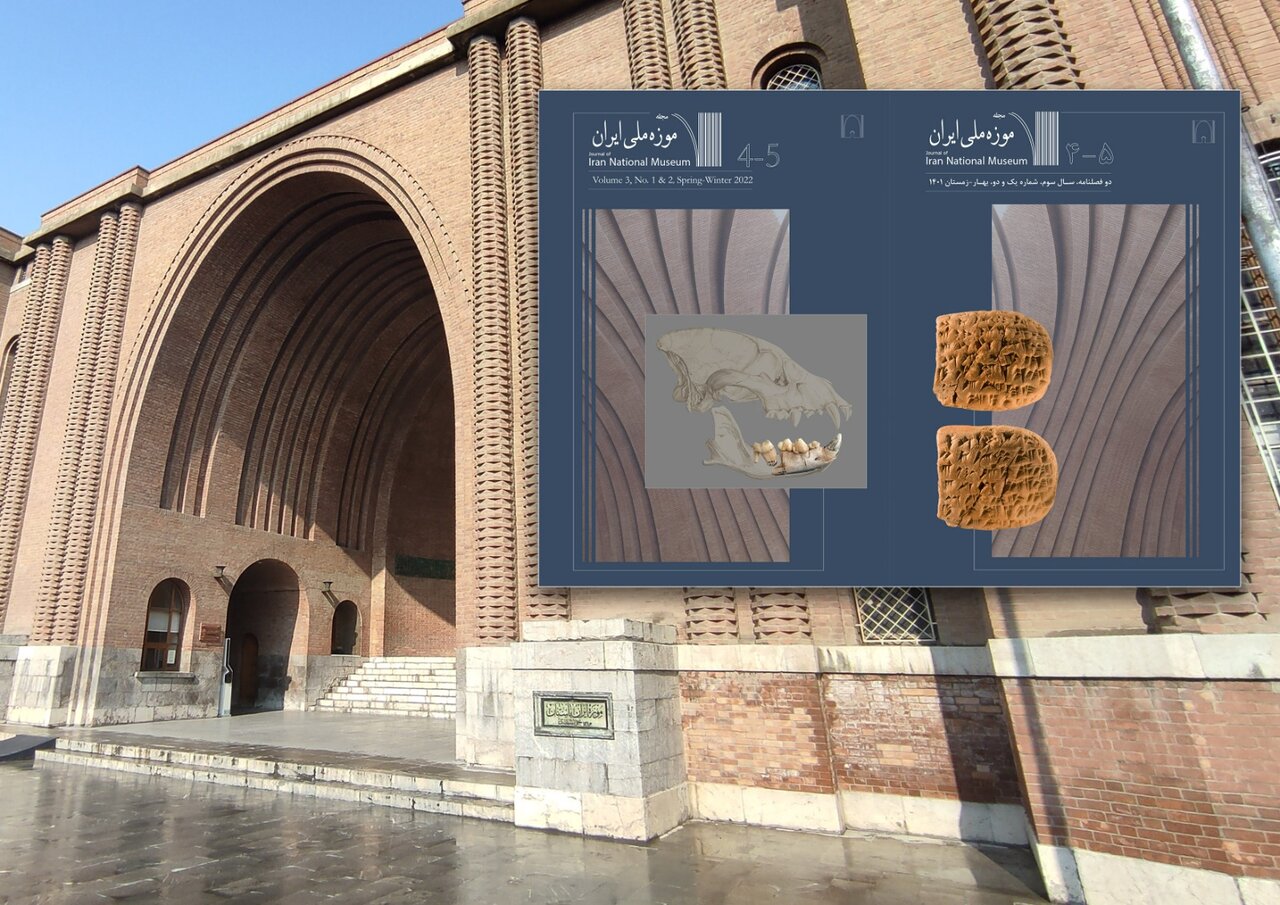Iran National Museum journal launches new issue on occasion of Cultural Heritage Week

TEHRAN - The new issue of the Iran National Museum Quarterly Journal (Volume 3, Issue 1) has been published on the occasion of the Cultural Heritage Week, which commences concurrent with the International Museum Day on May 18.
This issue includes 17 articles spanning archaeological field research, studies on collections housed in the Iran National Museum, and other topics related to museums and museology. The journal is published in both English and Persian and is freely accessible to the public.
Among the highlights of this issue are the results of field research conducted at the Lower Paleolithic site of Dehtal in Hormozgan Province. Additionally, animal remains from Wazmeh Cave in Kermanshah shed light on the diversity of fauna in the western Zagros region over the past 70,000 years. The journal also presents findings on cremated human remains from Zardeh Sahel near Kashan, which provide new evidence of burial rituals during the Neolithic period. A clay seal discovered at Tepe Jameh Shuran in the Mahidasht Plain offers insights into prehistoric connections between the central Zagros, Susiana, and Mesopotamia.
Further contributions include a study of a Bakun-period site in the highlands of Fars Province, which reveals evidence of seasonal pastoral activities. The analysis of Susa clay tablets (3100–2900 BC) documents early crop cultivation, labor organization, and reinforces Susa’s role as an administrative center. A newly identified Akkadian tablet details the reconstruction of the Ababar Temple in Larsa by a Babylonian king. The journal also explores sacrificial scenes depicted on the Arjan Bowl and examines Elamite terms such as takara found in the Persepolis archives, which illuminate administrative practices of the Achaemenid Empire.
Advanced methodologies are showcased in studies such as CT scans of the Chehrabad salt mummies, which analyze injuries caused by mine collapses. Another investigation explores the functional purpose of holes in the column capitals of Persepolis, suggesting they were used to hang lightweight decorations. The issue also discusses coins excavated by Herzfeld at Persepolis, Egyptian-style artifacts in Achaemenid Iran, and the sourcing of cobalt in blue-glazed ceramics from Iran and China (12th–17th centuries CE).
A Qajar-era painting in the Iran National Museum’s collection is newly attributed to the 1804 Battle of Yerevan. Practical museological topics are addressed as well, including strategies to mitigate earthquake risks to museum objects and the application of Kant’s concept of the sublime in the context of museum artifacts.
Since its inception, the journal has published 43 articles, attracting 18,286 views and 10,513 downloads. This reflects its growing role as a platform for interdisciplinary research bridging archaeology, history, and museum studies. The publication underscores the Iran National Museum’s commitment to fostering scholarly dialogue and disseminating knowledge about Iran’s rich cultural heritage.
AM
